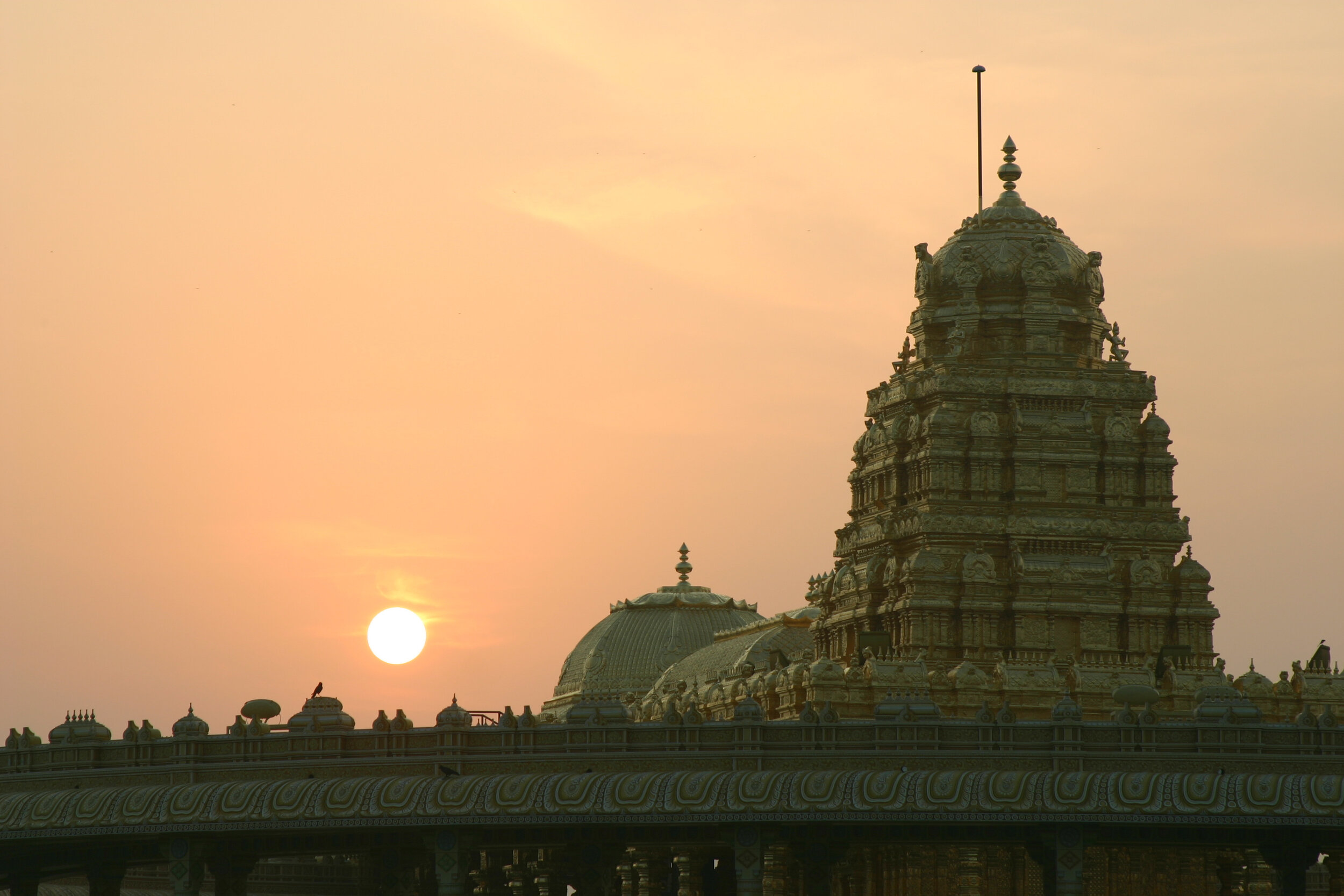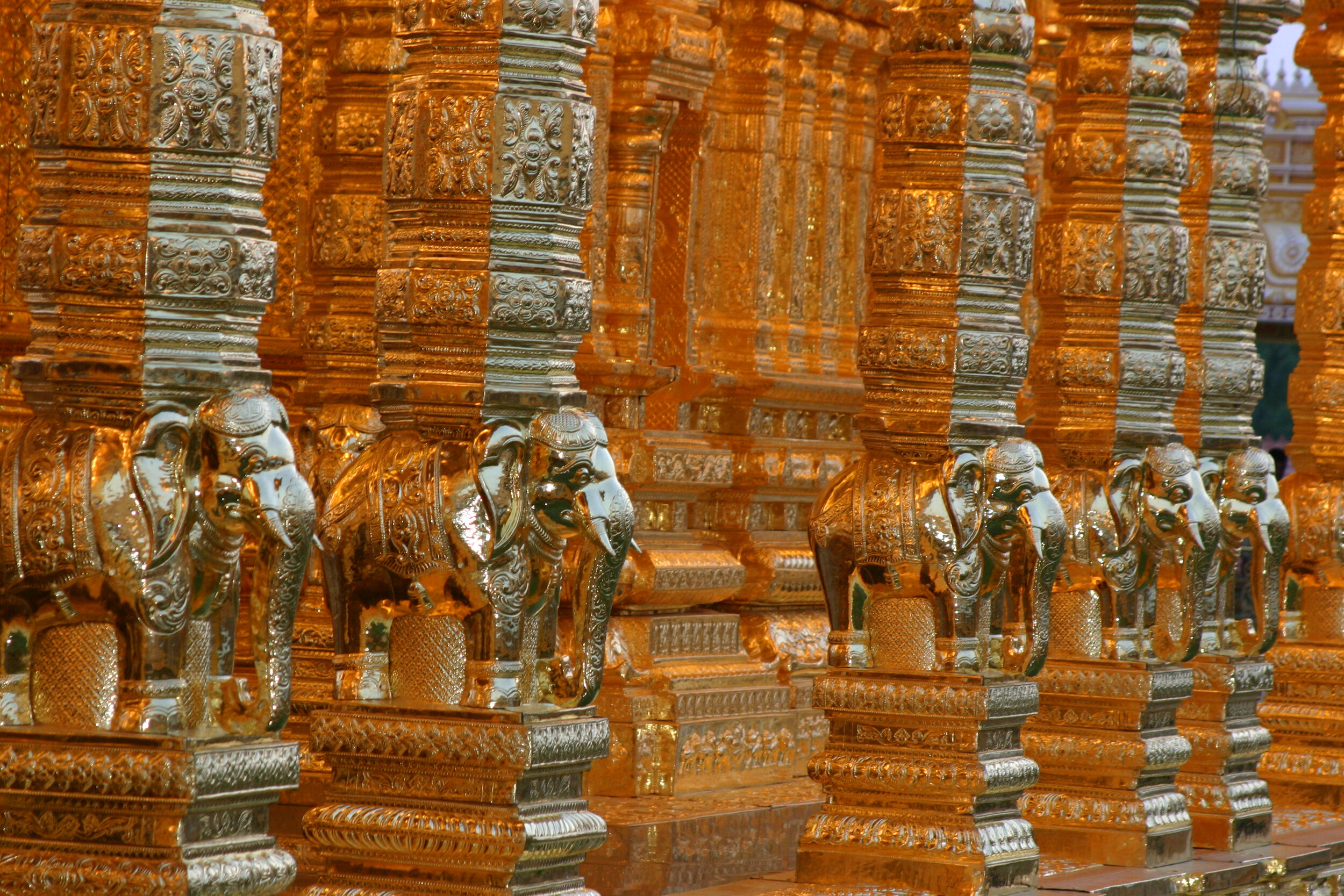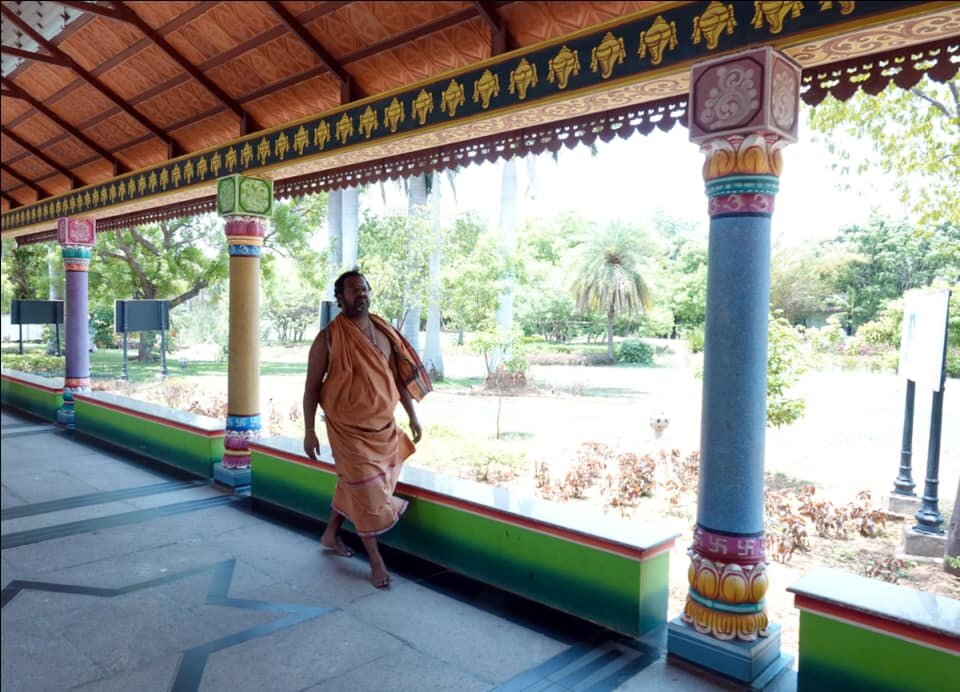
Sripuram
“One may ask why spend the money to build a golden temple? Why not a hospital or school? The wisdom gained from Sripuram will result in the building of a thousand hospitals and schools.”
— Sri Sakthi Amma
In 2007, Amma consecrated the Sripuram Golden Temple, which has become a spiritual oasis for people of all religions.
The intention behind Sripuram is for each person to realize the purpose of their birth, inspiring them to transform into
enlightened beings. Depending on the time of year, between 6 000 and 60 000 visitors per day will come to Sripuram,
from all over the world, to experience the positive vibrations of Divinity at work.

Sripuram Golden Temple is constructed according to vasthu, a traditional Vedic system of architecture. The surrounding area has extensive landscaped gardens, with many varieties of trees, ferns, flowering plants, birdlife, and water ponds, allowing people to experience calmness and serenity.
To reach the Golden Temple, one walks along a 1.8 kilometer star-shaped path. Along the star path are display boards with Amma’s teachings on how one may recognize and connect to their own divinity. Walking amidst such beauty, visitors have an opportunity to connect to their soul and leave the temple with renewed inspiration for their spiritual path and motivated to contribute their talents to the world.
Saptha Dwara (or seven steps) is located on the south side of the temple, leading up to the sanctum. The seven arches represent the seven chakras (energy points on the body). It is believed that as an individual progresses on the spiritual path, energy begins to travel upward from the base of the spine to the top of the head. With this ascent of energy, transformation occurs; transmuting one’s perspective from self to the self-less, from ‘I’ to ‘we’.
Certain metals conduct energy better than others. Gold has the maximum capacity for transferring positive vibrations. At the Mahalakshmi Golden Temple, the gold amplifies and radiates the energy generated by the chanting and poojas. Gold has many mystical meanings. In the Vedic chant known as the Sri Suktam, Goddess Lakshmi is described as the 'one who is shimmering in gold'.






SarvaTheertham is a small pond in the northeast corner of Sripuram, located according to vasthu. Sri Sakthi Amma performed many rituals in this body of water, before declaring that it contained the waters of all the major rivers of India. From that moment onwards, the pond was known as Sarva (all) Theertham (holy water).
Aerial view of Sripuram surrounded by the 1.8km star path which leads to the sanctum of Mahalakshmi. The Star Path is lined with various stone carvings of celestial beings, blending beautifully with the surroundings, enhancing further the serenity of this spiritual oasis.
In Hindu temples, bells are commonly used. It is believed that their ringing produces the resonating sound of ‘Om’ – the sacred and cosmic song of the universe. It also dispels negative energy and thoughts. Ringing the temple bell reminds those nearby to stop work for a moment and offer prayers in silence. It is also scientifically proven that the sound ‘Om’ produces calming and positive sound waves.








